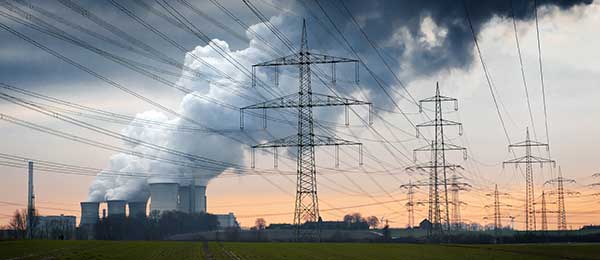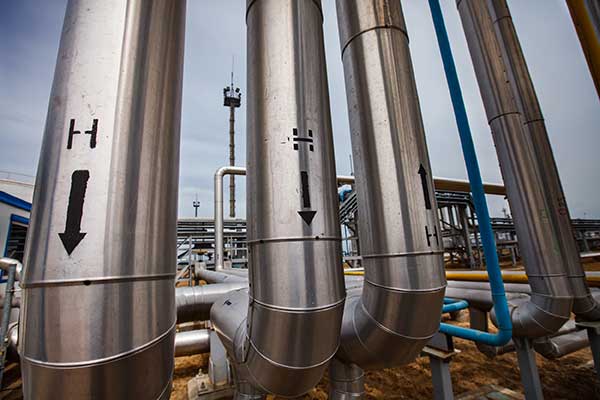This week’s Energy News Week in Review spotlights further measures by the Biden administration to roll back Trump era environmental policies. It also spotlights the move in some countries to scale up green hydrogen production for both domestic use and export.
Biden Resets Price on Carbon
President Biden has restored the $51 per ton price tag for carbon dioxide set during the Obama administration as a measure of the harm done by carbon emissions.
The price tag, or social cost of carbon, serves to guide policymakers and regulators in varying sectors, including industry and energy. It seeks to measure the economic impact of climate change in areas as diverse as rising health costs, damage to business due to extreme weather events, and property damage.
Former President Donald Trump had reduced the social cost of carbon dioxide to just $8 per ton.
However, experts say that even the $51 per ton is an unrealistically low estimate and needs to be revised substantially upward. New York state has suggested $125 per ton as a realistic figure.
A cost of $1,500 per ton has been placed on methane emissions and $18,000 per ton on nitrous oxide. This is in recognition of their much greater greenhouse warming effect, though these gases remain in the atmosphere for a much shorter period than carbon.
Saudi Arabia Plans To Market Green Hydrogen To Europe
Saudi Arabia announced plans recently to pipe green hydrogen to Europe as it seeks to capitalize on the growing energy market for renewables.
Though it is the world’s largest crude oil exporter, Saudi Arabia is making plans for a considerable injection of renewables into its energy mix. Last year, Saudia Arabia unveiled plans for a $5 billion project to produce green hydrogen from wind and solar energy. It also plans to produce 60 gigawatts of clean energy for its grid by 2030, most of which will come from solar energy.
Saudi Arabia hopes to eventually generate 50% of its energy needs from clean power and has expressed the desire to be on par with Germany in its use of renewables.
India Set To Launch Auctions for Green Hydrogen
The government of India will be inviting bids for the supply of green hydrogen within the next four to five months.
The auctions will encourage companies to supply green hydrogen produced locally to replace the use of imported natural gas and ammonia in the fertilizer, steel, and oil industry.
Government ministries have been holding discussions to work out the bidding framework and are considering imposing mandatory quotas for the use of green hydrogen in the local industry. It expects that imposing a mandatory quota would make green hydrogen economically viable in a few years.
The state energy company NPTC has entered into an agreement with Siemens to use renewable energy from its plants to produce green hydrogen for use in transportation.
Bangladesh Scrapping Nine Coal-Powered Plants
Bangladesh’s government has decided against construction of nine coal-powered energy plants after receiving the results of a study showing their detrimental environmental and health impacts.
The nine plants included some that were already under construction and were expected to yield a total of 7,461 megawatts of electricity.
The government said it would shift toward greater use of LNG and renewable energy, with plans to convert some of the remaining coal-powered plants for this purpose.
This comes on the heels of a shortage of coal from Indonesia where Chinese firms have secured much of the available supply.
At the same time, Bangladesh uses less than 50% of the power it generates each year while paying costly subsidies to power plant operators.
It currently has only 1.5% of domestic renewables in its energy mix and has expressed a desire to lead by example in reducing carbon emissions.
The report on the health impacts of the coal-powered plants suggests as many as 70,000 Bangladeshis could die as a result of health complications arising from the plants over the next 30 years.
British Insurer Aviva Aims for Net-Zero Portfolio
The British insurance firm Aviva said its portfolio investments will be net-zero carbon emission producers by 2040. It also intends to reduce the carbon footprint of its own business operations to net zero by 2030.
The company currently manages 300 billion pounds in investments. It has asked oil and gas, utilities, and mining companies in their portfolio to set net-zero emissions goals for the next three years with hard deadlines. Aviva says if the companies refuse to do so, it will drop them from its investment portfolio.
Aviva will stop underwriting insurance in coal and certain types of fossil fuels, such as shale gas, by year-end.
It will also put more money into green investments and make greater use of renewable energy in its day-to-day business operations, the company said.
Energy Tech Storage Company Gets $50 Million Investment
A startup that spun out of Alphabet’s moonshot factory X has secured funding for an innovative renewable energy storage system.
Malta Inc. is receiving $50 million from investors — such as Proman, Facebook co-founder Dustin Moskovitz, a Bill Gates-backed firm, and others — in its second round of investment funding.
Unlike typical renewable energy storage devices that rely on batteries, Malta’s storage system uses hot molten salts and cold antifreeze liquids to store renewable energy.
Malta’s thermal system draws on the research of Nobel laureate and Stanford University physics professor Robert Laughlin and further builds on it. The system yields 100 megawatts of energy over 10 hours and its cost of production is competitive with that of lithium-ion batteries commonly used for storage.
Pennsylvania Dams To Be Converted To Hydropower
Pennsylvania is currently undertaking the conversion of three of its dams to generate hydroelectricity. Rye Development awarded the contract to carry out the engineering works on the three dams to Canadian firm SNC-Lavalin Group.
SNC-Lavalin will work on the locks and dams on the Allegheny, the Monongahela, and the Ohio rivers. Rye Development is retrofitting a total of eight dams that are expected to produce 590 gigawatt hours annually of domestic energy and generate electricity for 80 years.
Solar Power in Space Provides Clean Energy
Pentagon scientists have shown that solar energy can be beamed from space to provide electricity to any part of the earth.
The Photovoltaic Radiofrequency Antenna Module (PRAM) is a solar panel that was launched into orbit last year by the U.S. Air Force. It captures sunlight that does not pass through the earth’s atmosphere and can send clean energy to the earth via microwaves.
Though currently the size of a pizza box and only able to power an electronic mobile device, the technology may be scaled up to provide massive amounts of renewable energy around the world, particularly in remote locations.
The solar panels work in conjunction with antennas on earth that send signals to the solar panels in space. These then respond by sending microwaves back to the earth that can be converted into electricity.
Australian Teens Sue Government Over Coal Mine
Eight Australian teens have launched a class-action suit against the government over the proposed extension of an open-cut coal mine in New South Wales.
The teenagers argue that the government has a duty of care to protect them from future climate change.
The Whitehaven Coal’s Vickery coal mine at the heart of the dispute is expected to create 450 jobs and more than AU$1 billion in revenues. But advocates for the teens say the mine will also lead to 100 million tons of additional greenhouse gases being produced.
The Australian government says it will make a final decision on the coal mine’s extension after a verdict is reached in the trial.
Porsche Creates E-Fuel To Clean up Internal Combustion Engines
German carmaker Porsche says it will begin manufacturing synthetic fuel next year that will cut carbon emissions in internal combustion engine cars by as much as 85%.
The firm is working with Siemens Energy and other partners in Chile to produce 55 million liters of the fuel by 2024 through the use of wind energy in southern Chile. It expects to scale up production 10 times within the space of two years.
The fuel is said to work on existing models of cars without requiring modifications to their engines and has the potential to make internal combustion engine vehicles as clean as electric vehicles when all factors are taken into account.
The synthetic fuels contain eight to 10 components in comparison to the 30 or 40 components found in other fuels.
Opinion writer: Jewel Fraser
The opinions, beliefs, and viewpoints expressed by the various authors do not necessarily reflect the opinions, beliefs, or viewpoints of Interactive Energy Group, LLC (IEG) or its parent companies or affiliates and may have been created by a third party contracted by IEG. Any content provided by the bloggers or authors are of their opinion and are not intended to malign any individual, organization, company, group, or anyone or anything.
Brought to you by energysavings.com
All images licensed from Adobe Stock.
Featured image:



